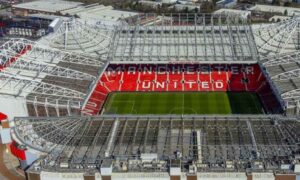Emirates Stadium is in sight by Arsenal Football Club for a revolutionary expansion plan. The expansion plan is to increase the seating capacity by more than 70,000 seats. In doing so, the club aims to cut down its waiting list for season tickets and increase match day revenue.
History of Emirates Stadium
Emirates Stadium, the club of Arsenal FC, opened in July 2006 in Holloway, North London. It was built to replace Highbury due to its capacity constraints and took around £390 million. This stadium was built beginning in 2004 following some years of planning and financing hitches. It is named after the airline sponsor Emirates, and it holds over 60,000 fans and is the new era of Arsenal.
Facts and status now
Emirates Stadium has a capacity of about 60,704 spectators.
Accounts state that the board of Arsenal and architects has started designs and studies to expand it.
Estimated to cost around £500 million.
Planning permission has yet to be submitted by the club.
Due to legal, spatial, and structural restrictions on the stadium, expansion will be technically difficult.
Among the possibilities under consideration is to temporarily transfer home games elsewhere—Wembley Stadium has been named as a likely temporary home.
The earliest feasible date for commencing the build would be following the 2026–27 season, as with planning, obtaining permission, and raising finance.
Having these in mind, the expansion remains at the planning and feasibility stage and not the construction stage.
Why a plan, then?
There are a range of driving reasons:
1. Phenomenal ticket demand. Arsenal alone features over 100,000 names on its season-ticket waiting list, according to reports.
2. Additional revenue potential. Additional seating equals additional numbers sold, particularly premium seating and hospitality.
3. Staying competitive. Most of the biggest clubs are rebuilding stadiums or constructing new stadiums to capitalize on additional match day revenue.
4. Modernization. It is one of the strategies to enhance the flexibility of the stadium, potentially through seating plan improvement, structural development, and upgraded facilities.
Challenges and constraints
Arsenal is faced with severe challenges:
Space limitations. The stadium has residential areas and infrastructure around it, and there is hardly any scope for expansion outwards.
Structural restraints. The existing building has engineering limitations which render it hard to add tiers or lift sections.
Short-term disruption. Areas of the stadium would have to be closed to allow construction. That would decrease capacity or require relocation for a number of seasons.
Delays in regulations and planning. Time is needed to proceed through local council approval, meet safety requirements, and work through issues of the surrounding neighborhood.
Financial risk. £500 million is mind-boggling. Profits will depend on how many more financially rewarding seats are added and how many turn into premium seats.
What the new design could be like
Though not yet published in full, press stories give a few options:
The build-out could include steeper slopes of seating (more sloping gradients) to fit more seats into the same overall footprint.
They could “fill in” or stretch upwards parts or all of the curves at the end of the stadium bowl to add additional rows
Designers do not necessarily have to alter the stadium’s outside shell and basic shape to preserve its appearance and minimize issues with neighbors.
Changes in the roof or sections of it or rebuilt in a bid to accommodate additional tiers.
Additional seating will also translate into improved amenities (restrooms, circulation, concessions, etc).
With effective implementation, the Emirates would be on a par with the big stadiums in England and Europe.
Timeline and what to look out for
The project is very much conceptual at this point:
There is no planning application at present.
The club has recently commissioned or appointed a specialist (Otto Maly) to lead on growth plans.
Development before 2027 at the earliest is unlikely.
Some home games may face temporarily relocation (Wembley is first choice).
Author’s Insight
Arsenal‘s intentions to extend the Emirates Stadium beyond 70,000 seats are ambitious. It is responding to genuine demand and economic sense. But it is an early days. There are many barriers in its path—from engineering to planning to finance. The next few years will determine if the club can turn the dream into a reality or not.







































